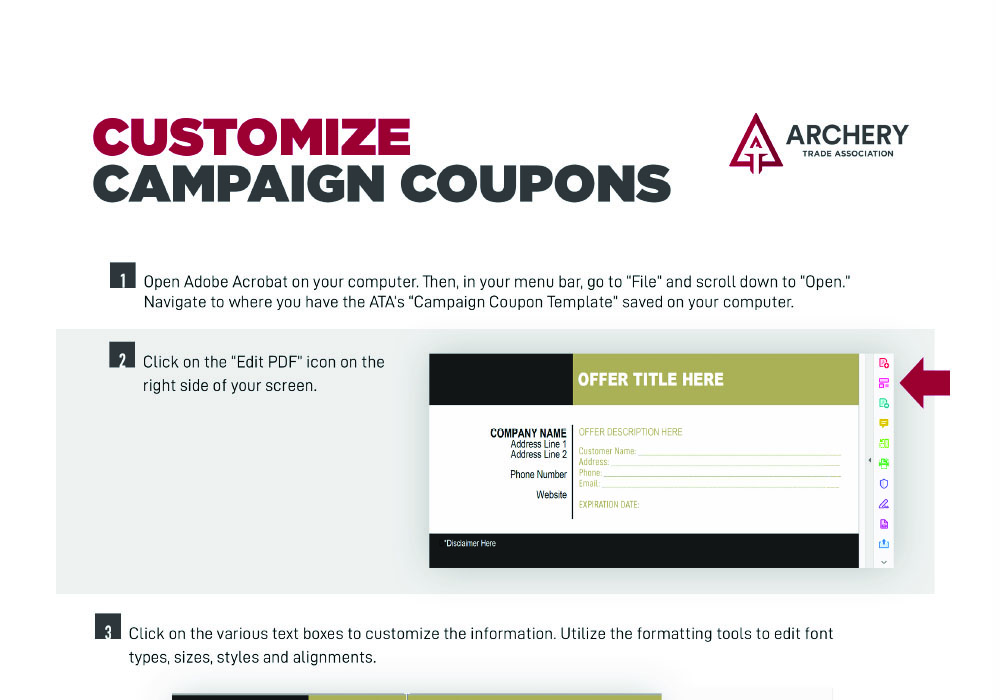BusinessMarketing
Evaluate Your Marketing Efforts: What’s Working, What’s Not, and How To Fix It
Follow this five-step plan to determine if your marketing efforts are effective.
Photo Credit: Jackson Marketing
Many businesses changed their marketing strategies to better connect with customers during the pandemic, but were those changes productive, and if so, will they continue to work as things return to normal?
We spoke with David Jones, chief marketing officer for Jackson Marketing, to learn how to evaluate a marketing plan to ensure you’re putting getting a good return on investment. Jackson Marketing is a MyATA service provider, which is an ATA-vetted company that offers expert support and discounts on their services to ATA members.
Jones said evaluating your marketing plan is necessary for three reasons:
1. Marketing should be a top priority for any company, and business owners must ensure they’re investing in the strongest, smartest programs.
2. The best marketing tactics are constantly changing, so business owners must stay in tune with what’s working and what’s not at all times.
3. Your brand is likely evolving, and your marketing strategies should also evolve to meet new brand goals. For example, new businesses might focus their marketing materials on awareness and then switch to building customer loyalty once they become well known.
It’s important to conduct a full evaluation of all of your strategies during the year. Pick a month that works well for you (many choose May or June because things are slow then). But you’ll also want to run a mini evaluation in late summer to help you put your best foot forward for the holidays and the start of the new year.
Take a few hours to use these steps to evaluate your marketing plan so you can adapt and improve.

Decide what your marketing strategy is going to be and choose the platform to support your goals. Photo Credit: Jackson Marketing
Jones challenges business owners to identify the goal they hoped to accomplish through their marketing efforts. For example, your marketing goal might have been to grow sales by 10%, grow market share by 2% or increase profitability by 5%. Your goal should have been SMART (specific, measurable, actionable, relevant and timely). If you’re working from a marketing plan, it should be easy to look back at it and find your goal. If you’re randomly assessing efforts, try to pinpoint the purpose behind them.
Once you understand what you were trying to accomplish, you want to identify the strategies you used to try to achieve it. Different marketing strategies will have different results. Therefore, if you have multiple goals, you should have used multiple marketing strategies.
For example, if your goal was to grow sales by 10%, you might have created a gift guide or allowed people to test-drive your products. If your goal was to obtain 13 new customers, you might have exhibited at a community event or used billboards to increase awareness of your business.
Jones said a lot of people disregard the need to match goals and strategies, which is detrimental to their evaluation. Here’s an analogy that might help: Think of marketing like hunting. If your goal is to shoot a deer, you might use rattling antlers and a deer decoy. If your goal is to shoot a turkey, you’ll probably use a box call and a turkey decoy. You wouldn’t use a deer decoy for hunting turkeys, would you? The same goes for marketing. You’ll likely need to use different tools and strategies for different goals. But sometimes you can use two strategies to achieve the same goal, just like you can use camouflage for hunting both deer and turkeys.
“One of the challenges with measuring your marketing effort is the sheer number of factors that go into reaching goals and being successful,” Jones said. “It’s extremely important to tie them to the right thing.”
Do your best to match strategies with goals so you can accurately measure the results, which brings us to step 3.

Choose a marketing strategy that has traceable results, like coupon usage. Photo Credit: ATA
According to Jones, people sometimes use a particular marketing strategy because they’ve always used it or because they have relationships with people, but neither of those is a good reason. Here’s why:
“Marketing is a blend of art and science, so you must evaluate everything based on art or science,” Jones said.
In other words, every strategy must pull its weight. Marketing plans are rarely all-or-nothing propositions, meaning it’s rare that all your strategies worked or that none of them did. Usually, some work and some don’t. Your job is to determine which is which. Here are two ways to assess your marketing strategies.
This type of evaluation involves math. For example, you can track ads, links, website clicks, website traffic, coupons, discounts, redemption rates, and the number of followers or engaged users. You can also conduct polls and surveys. The numbers you get will help you determine which parts of your program worked.
For anything you can’t put a number or statistic to, you must use the art of observation, plus your gut and your brain, to make a judgment call. For example, billboards and radio ads are common marketing strategies, but unless people mention they heard about your business from those places, you’d have no idea if those strategies work or not. The same goes for partnering with a hunt club, sponsoring a local event, or paying community influencers to plug your business. You must use your gut and common sense in these cases, so pay attention. You might notice two-thirds of participants at an event you sponsored were customers, which means you were in the right spot for building business connections and likely attracting new customers.
Jones said a good way to approach artistic marketing strategies is to ask yourself, “Will this hurt my business if I don’t do it?” The answer might involve testing.

WE ARE HERE TO HELP THE INDUSTRY, TO HELP INDIVIDUAL BUSINESSES GET THE MOST OUT OF THE INDUSTRY, AND TO HELP YOU.

Switch to a new social media platform you haven't previously used, like YouTube. The Resource Website houses a How-To document on uploading YouTube videos. Photo Credit: ATA
After you’ve carefully analyzed your strategies in terms of math or intuition, check them against your goal. Did you accomplish it? If your answer is yes, then the majority of what you did likely worked. If your answer is no, then your strategies didn’t work or you didn’t develop your plan well enough. The overall assessment of your plan will depend on how aggressive your goals were. For future reference, you must balance your goals so they’re not too high or too low.
You should also rank your strategies in order of most to least valuable. Doing this helps you see and internalize their effectiveness. And it’ll be easier to determine which strategy to cut if your marketing budget runs short or you want to try something new.
Remember, the return on investment for each strategy will change depending on what you’re trying to do. A billboard might be great for awareness but terrible for product promotion. A good marketing plan is all about balance, allocation and attribution.
Use the information you gathered throughout the evaluation process to create an improved marketing plan. Jones recommends putting yourself in your customer’s shoes when you do this. He also encourages ATA members to take risks because many good marketing strategies are identified through trial and error.
“Think about what you’re saying, how you’re trying to reach customers and how you’re marketing,” he said. “When you do that, you’ll make more right decisions because you’re putting the customer’s needs first. The things your customers want might not be marketing-related, either. Don’t forget about that.
“Measure what you can measure to ensure things are working, but don’t be afraid to keep doing things you can’t track. Sometimes those are the most valuable things.”
All marketing plans have room for improvement. Jones said you’ll have business changes and environment changes, and you’ll run into things you didn’t anticipate when you were planning. Once your plan is in place, give yourself grace and use the 70/30 rule, which means you’ll execute 70% of the plan and adjust the other 30% as you go.
To work with Jackson Marketing, contact Todd Steen, executive director of business development and a bowhunting enthusiast, at (864) 272-3179 or todd.steen@jacksonmg.com. There are three other MyATA service provider marketing companies, including RubLine Marketing, Shine United and Approval Payment Solutions/VIV. You can find out more about them, as well as all the MyATA service providers, by visiting www.archerytradest.wpengine.com/myata-service-providers.
Questions? Contact Nicole Nash, ATA’s range and retail program manager, at nicolenash@archerytrade.org or (866) 266-2776, ext. 116.
